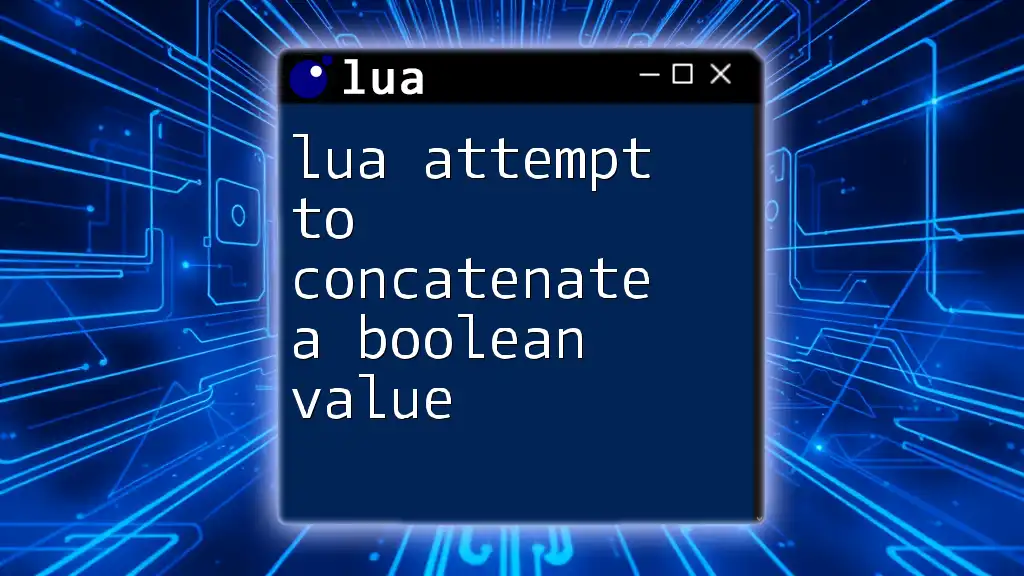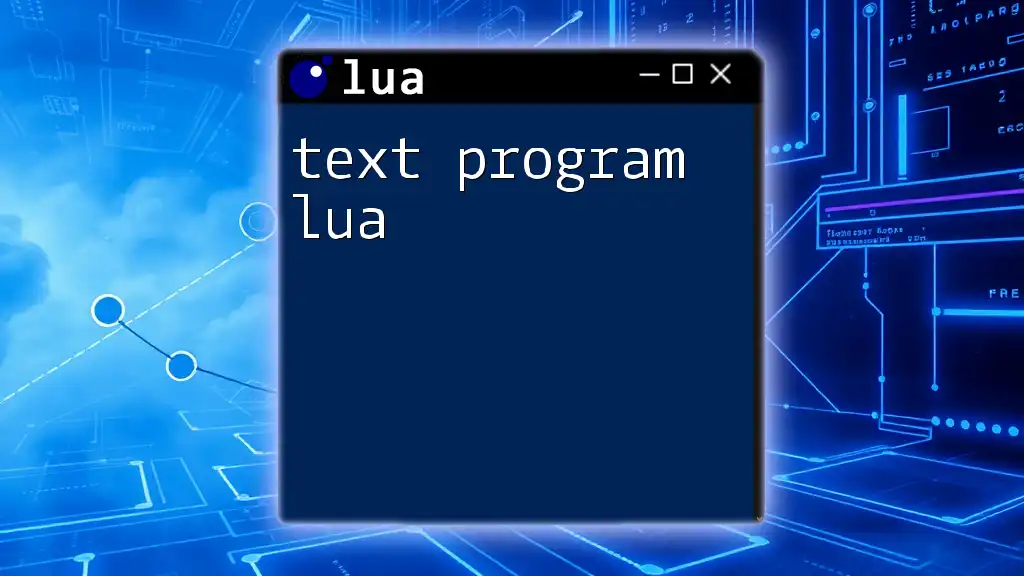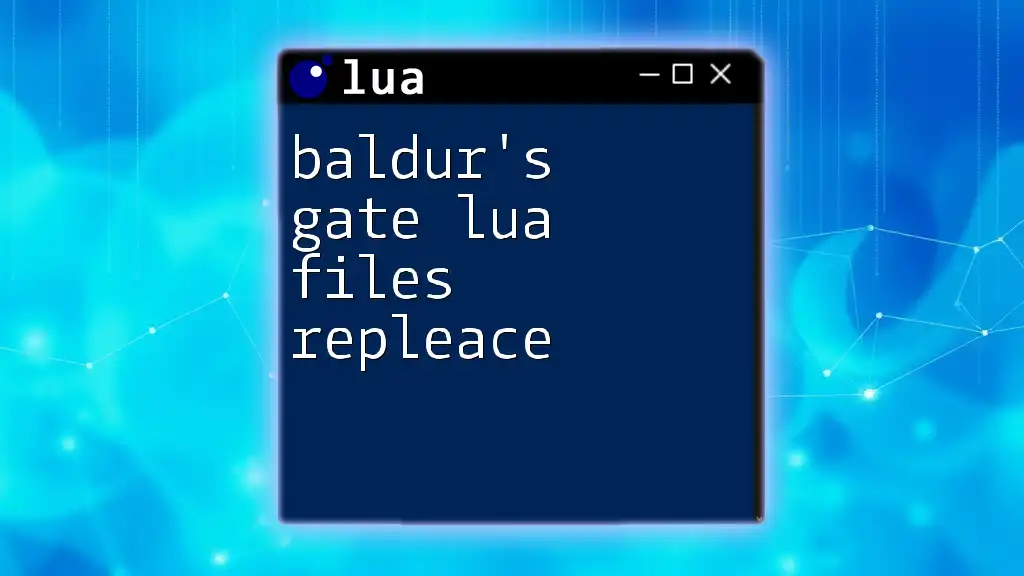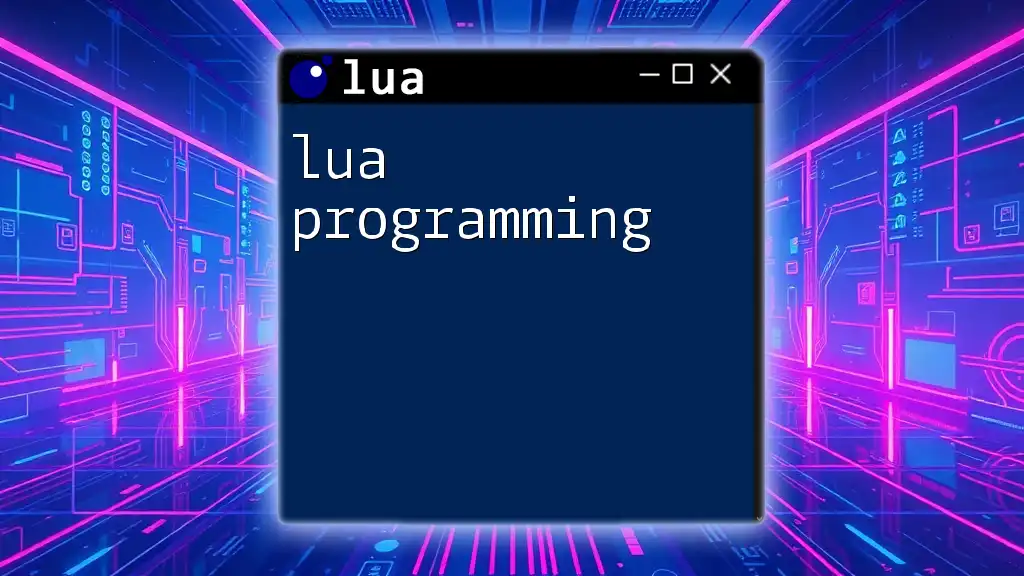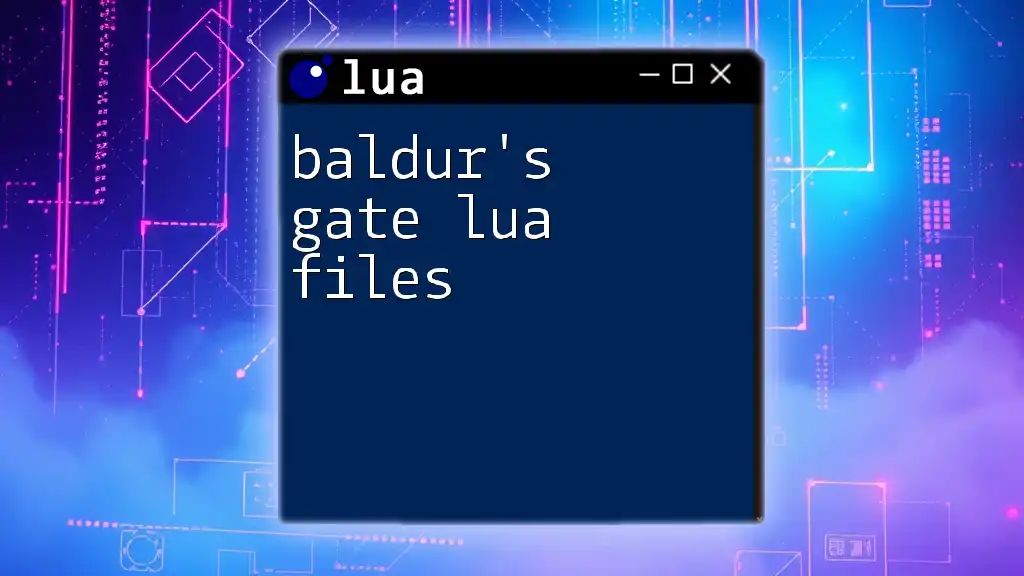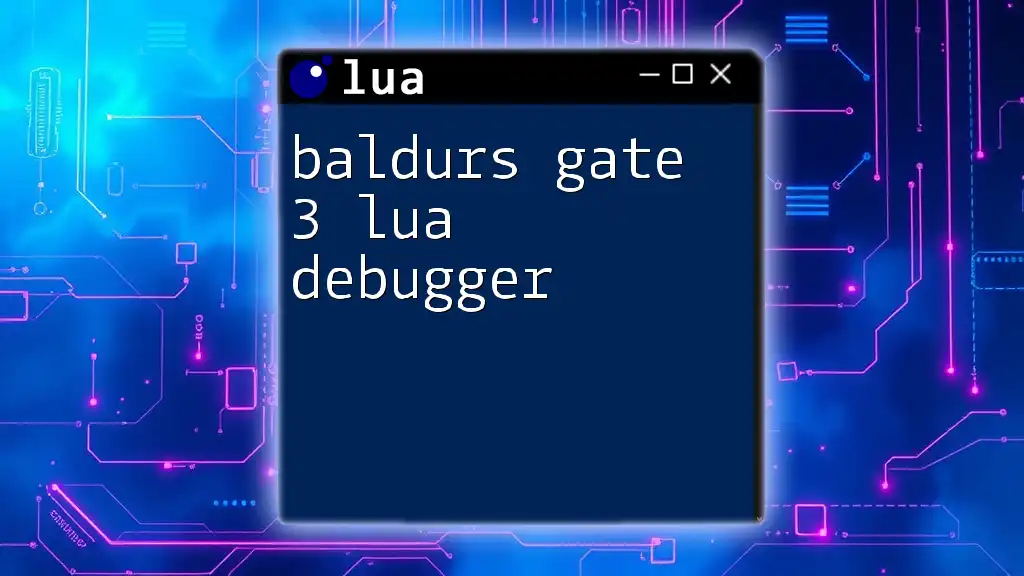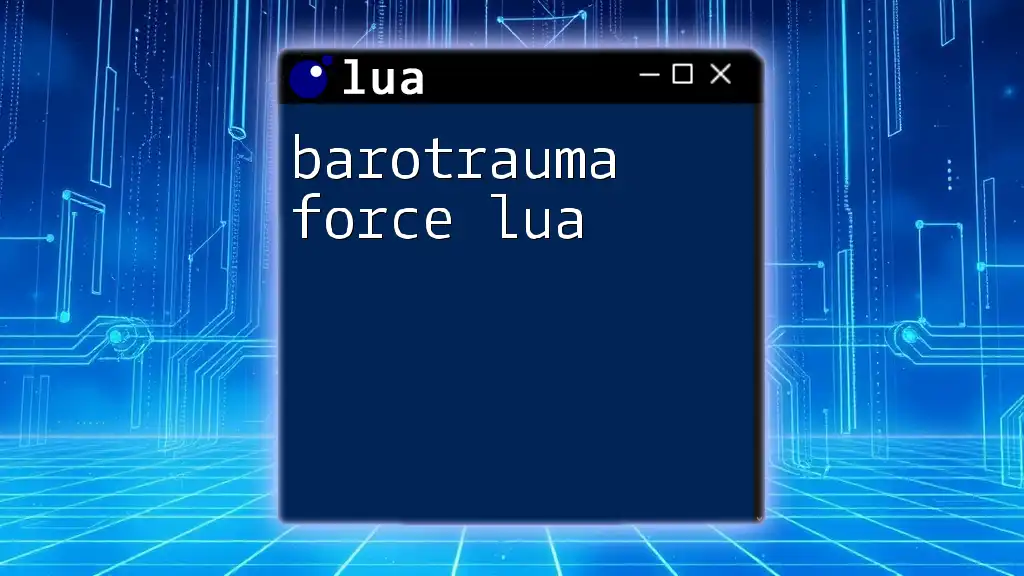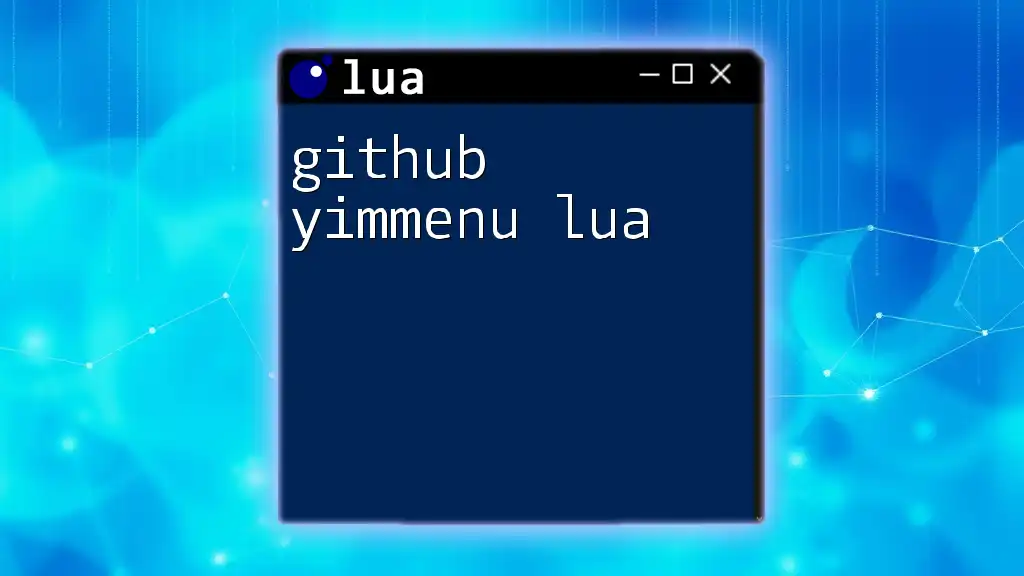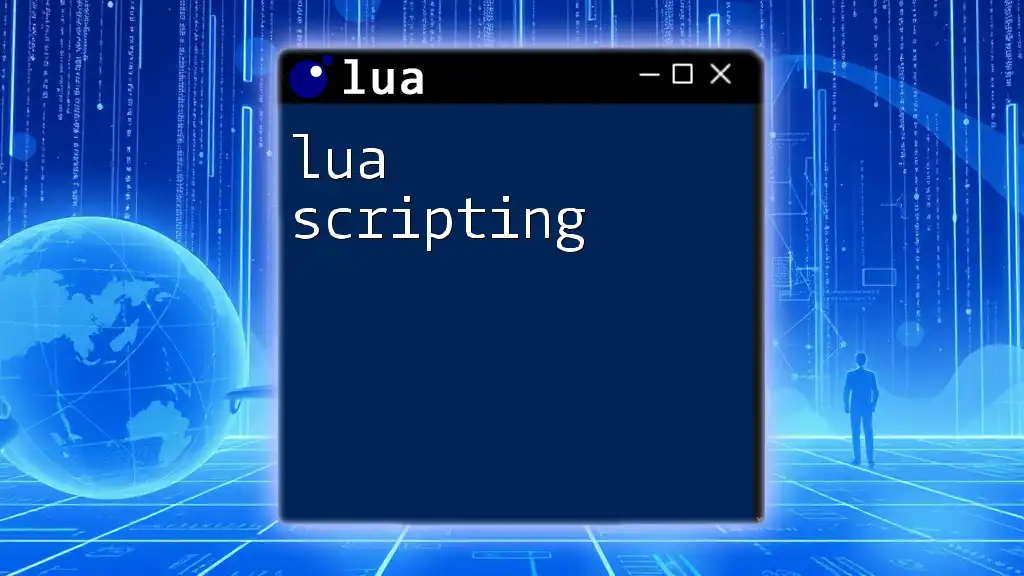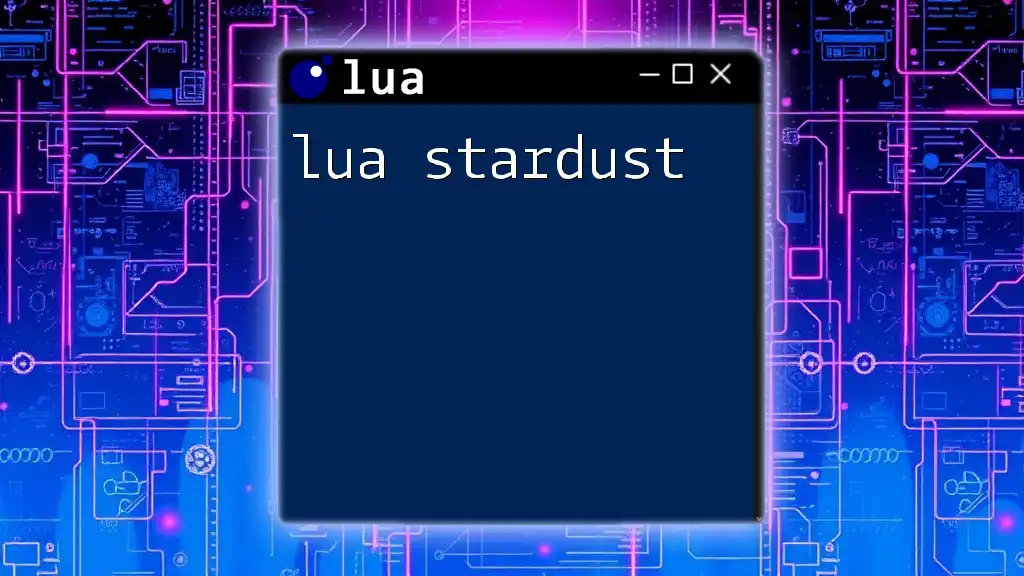In Lua, attempting to concatenate a boolean value with a string will result in an error, as concatenation is only defined for strings, numbers, and tables. Here's an example:
local success = true
local message = "Operation successful: " .. success -- This will cause an error
Understanding Lua Data Types
Key Data Types in Lua
In Lua, various data types play a crucial role in writing efficient and effective code. Understanding these types sets the foundation for mastering how data is manipulated:
- String: A sequence of characters used for text manipulation. For example, `"Hello, Lua!"` is a string.
- Number: Represents numerical values. Lua treats all numbers as floating-point by default, making it versatile for mathematical operations.
- Boolean: A fundamental type that can only have two values: `true` or `false`. It is frequently used in condition checking.
- Table: The most flexible data type in Lua, functioning as an array, dictionary, or even an object.
Importance of Data Types in Concatenation
Data types significantly influence how operations are conducted in Lua. Concatenation, which combines strings into one, requires that all components involved be strings. If you attempt to concatenate a non-string data type, such as a boolean, Lua will throw an error. This reinforces the concept of type safety, ensuring that operations like concatenation behave predictably.
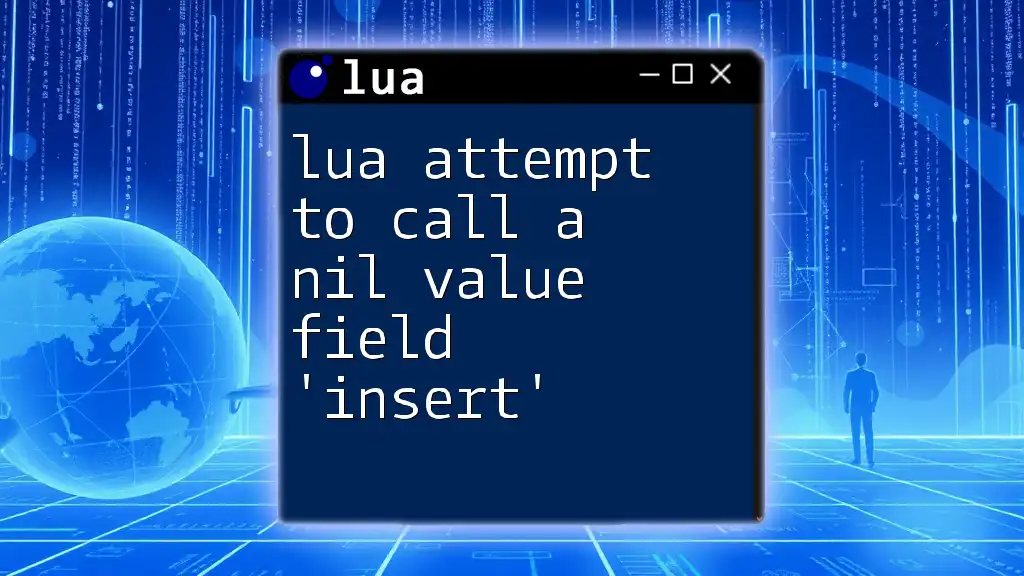
The Concatenation Operator in Lua
What is Concatenation?
Concatenation in programming is the act of combining strings. In Lua, this is achieved using the `..` operator. For example, if you have two strings, "Hello" and "World," you can concatenate them like so:
local greeting = "Hello, " .. "World!"
print(greeting) -- Output: Hello, World!
Valid Concatenation Examples
Lua handles string concatenation quite well. Here’s a simple demonstration:
local age = 30
local message = "I am " .. age -- Lua converts the number to a string automatically.
print(message) -- Output: I am 30
However, if you attempt to concatenate incompatible types, confusion and errors arise.
Invalid Concatenation Scenarios
It’s important to understand situations where concatenation may lead to issues. For instance, consider the scenario where a boolean value is improperly concatenated:
local isActive = true
local statusMessage = "Active status: " .. isActive
print(statusMessage) -- Error: attempt to concatenate boolean
This leads to a fundamental question: What happens when you concatenate a boolean?

Attempting to Concatenate a Boolean Value
What Happens When You Concatenate a Boolean?
When you try to concatenate a boolean value using the `..` operator, Lua responds with an error. The precise error message is: "attempt to concatenate boolean". This behavior underscores the necessity of understanding Lua's type system.
Example of Concatenating a Boolean Value
The confusion can be beautifully illustrated:
local isActive = true
local statusMessage = "Active status: " .. isActive -- This throws an error.
print(statusMessage) -- This line will never execute due to the previous error.
The error represents a critical aspect of programming with Lua: always be mindful of the data types you handle.
Error Handling in Lua
When dealing with such errors, understanding how to debug becomes vital. The key is to recognize when data types are incompatible—particularly before an operation that may produce an error.
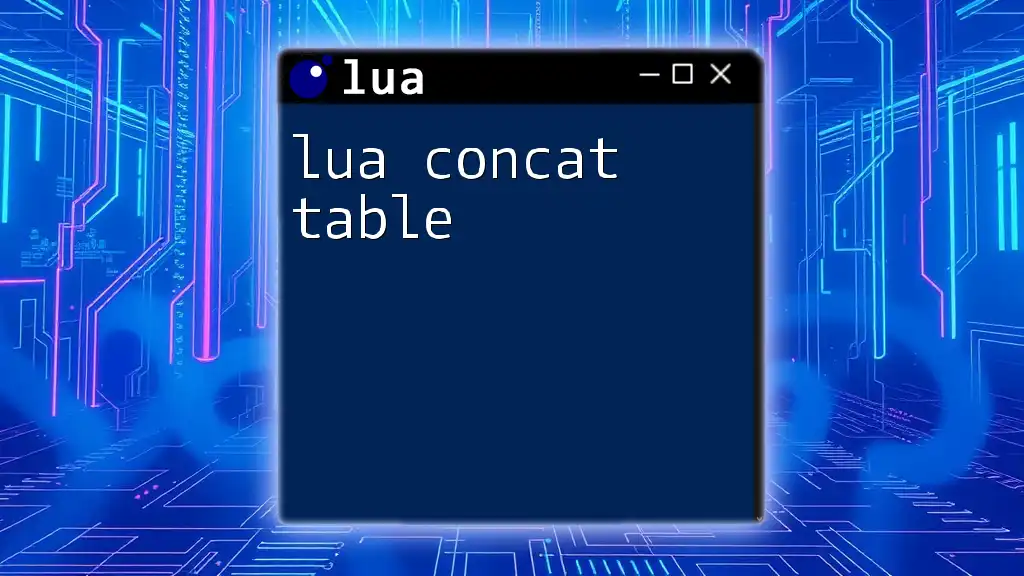
Converting Boolean Values to Strings
Why You Need Conversion
In scenarios where a boolean value is required as part of a string, direct concatenation will fail. Thus, conversion becomes essential. By converting boolean values to strings, you can incorporate them into messages effectively.
Different Methods to Convert Boolean to String
Using Conditional Statements
One common approach is using a conditional statement to produce a string based on the boolean value:
local isActive = false
local statusMessage = "Active status: " .. (isActive and "true" or "false")
print(statusMessage) -- Output: Active status: false
This method evaluates the boolean and provides a corresponding string, ensuring that concatenation works without issues.
Using `tostring()` Function
An even simpler method is to use the built-in function `tostring()`, which converts any value to its string representation:
local isActive = true
local statusMessage = "Active status: " .. tostring(isActive)
print(statusMessage) -- Output: Active status: true
This concise approach is effective and eliminates the potential for errors that could occur through manual conditional checks.

Best Practices for Concatenation in Lua
Check Data Types Before Concatenation
A best practice in Lua programming is to always validate data types before performing any operations. Using the `type()` function lets you inspect the data type of variables, ensuring that only compatible types are concatenated.
Use String Interpolation (If Necessary)
While Lua does not natively support string interpolation, there are libraries, such as LPeg or other string handling libraries that offer this functionality. String interpolation forms a powerful alternative to concatenation and manages non-string types effectively.
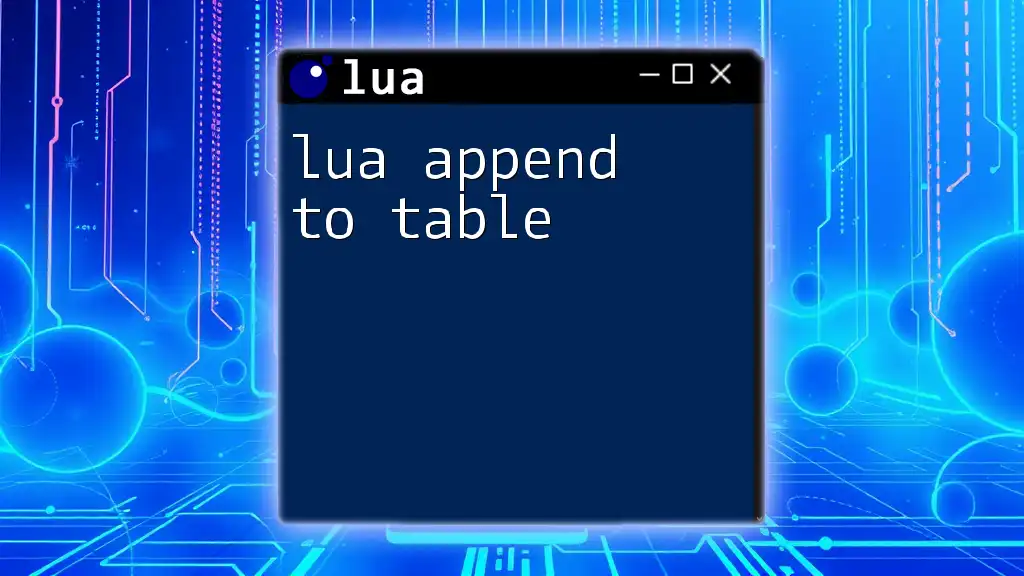
Conclusion
In summary, understanding the intricacies of what occurs during a lua attempt to concatenate a boolean value is essential for anyone learning this programming language. By grasping the differences in data types, the nature of the concatenation operator, and the need for conversion methods, you become equipped to handle these common scenarios. Training yourself to validate data types and consider alternative methods for integration will ensure that you program effectively in Lua.
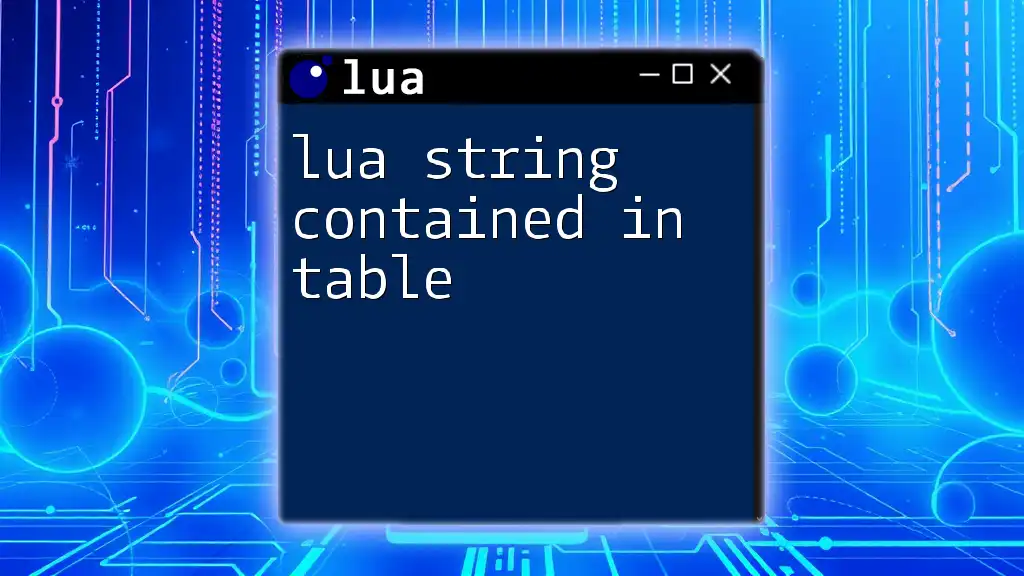
Additional Resources
For further reading, I encourage you to check out the official Lua documentation. Engaging with community forums where fellow Lua enthusiasts discuss their experiences can also deepen your understanding and resolve any lingering doubts.

Call to Action
As you explore Lua's capabilities further, share any personal experiences you encounter while concatenating data types. Your insights could help others in their learning journey! If you're interested in structured lessons on Lua, consider exploring my services, where we simplify coding concepts into concise, actionable tutorials.

